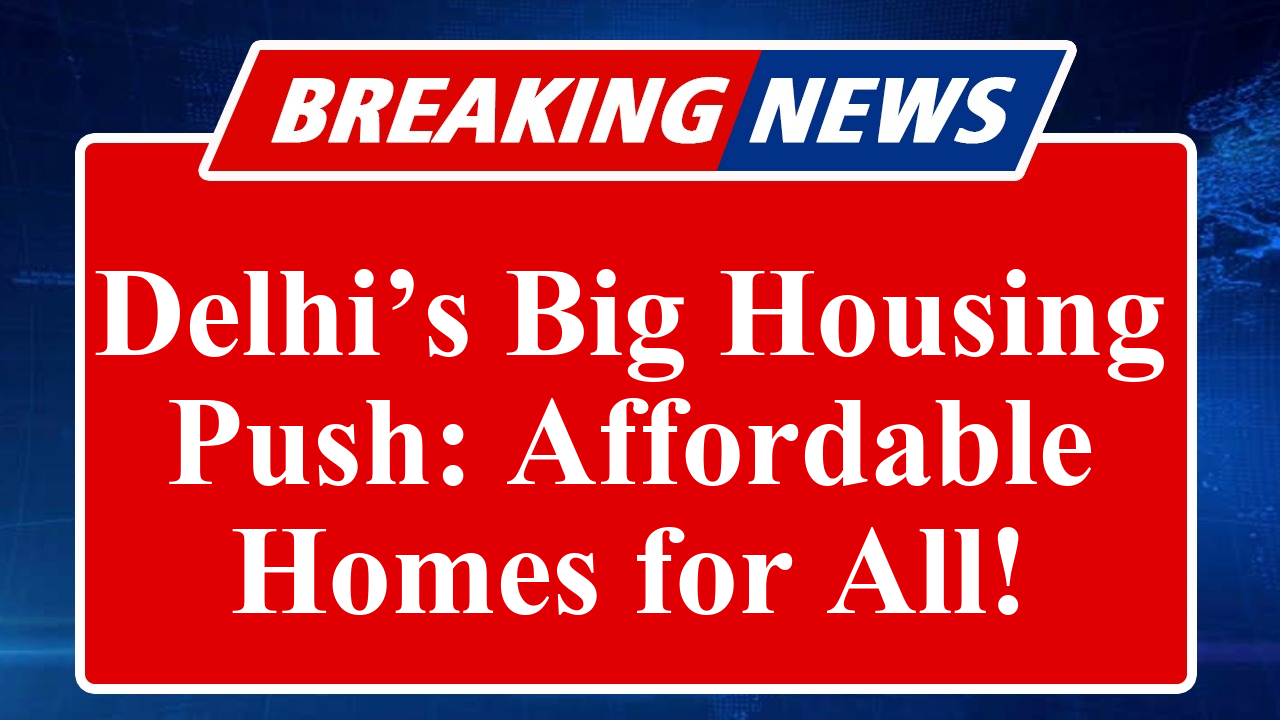Delhi’s ambitious expansion of the PMAY-U 2.0 scheme aims to provide pucca houses to one crore urban families, with 2.35 lakh new homes recently approved. The initiative, launched in 2024, targets the urban poor and middle class, offering financial aid and interest subsidies. However, challenges like rising costs and slow approvals persist, impacting supply.
Delhi’s PMAY-U 2.0 Push to House Urban Poor and Middle Class
The Pradhan Mantri Awas Yojana-Urban (PMAY-U) 2.0, launched in September 2024, has gained momentum in Delhi with the Central government approving 2.35 lakh new houses under the scheme, a significant step toward addressing the city’s housing crisis. This expansion, part of the broader goal to provide pucca houses to one crore urban families across India over the next five years, focuses on uplifting the urban poor and middle-class families by ensuring access to affordable, all-weather homes through construction, purchase, or rental options.
In Delhi, the scheme operates through four key verticals: Beneficiary-Led Construction (BLC), Affordable Housing in Partnership (AHP), Affordable Rental Housing (ARH), and Interest Subsidy Scheme (ISS). The ISS component offers a 4% interest subsidy on home loans up to ₹25 lakh for houses costing no more than ₹35 lakh, making homeownership more accessible. The funding model follows a 90:10 cost-sharing pattern between the Centre and Delhi, with the Central government covering 90% of the costs for the Union Territory.
The Delhi Development Authority (DDA) has complemented PMAY-U 2.0 with its Apna Ghar Awaas Yojana 2025, launched in May 2024, which has already sold over 850 flats within a month, with 75% of sales in Narela. Offering discounts of 25% on Low-Income Group (LIG) flats and 15% on Economically Weaker Section (EWS), Middle-Income Group (MIG), and High-Income Group (HIG) categories, the scheme has gained traction, supported by an online portal and a chatbot for round-the-clock assistance.
However, Delhi’s affordable housing landscape faces challenges. Despite the extension of PMAY and tax benefits announced in the 2024 Budget, the supply of affordable homes (priced under ₹50 lakh) remains muted. Industry experts cite rising land and construction costs, coupled with low builder margins, as key hurdles. In Delhi-NCR, the supply of affordable housing has halved since 2019, with only 18% of upcoming residential projects in the affordable segment, compared to 45% in the luxury category.
Slum redevelopment is another focus under PMAY-U 2.0, with a ₹1 lakh grant per house for eligible slum dwellers. Yet, Delhi’s slum rehabilitation policy has faced criticism for slow progress, with only two projects completed in the last decade, including one in Kalkaji with 3,024 EWS flats. Recent demolitions have displaced residents to far-flung areas, contradicting the policy’s in-situ housing priority.
The real estate sector in Delhi is also undergoing reforms, such as automatic redevelopment of buildings over 50 years old and simplified land amalgamation rules, which could modernize areas like Lutyens’ Delhi. However, experts warn that these reforms may drive up property prices, potentially offsetting affordability gains.
Despite these efforts, the city faces a shortfall of nearly one crore affordable housing units, a gap that could widen to 2.5 crore by 2030 if current trends persist. Slow approval processes and rising input costs, such as steel and cement, further complicate the implementation of PMAY projects.
Disclaimer: This article is based on recent news reports, government announcements, and industry insights from sources like The Hindu, Times of India, and posts on X. Information is accurate as of July 3, 2025, but may be subject to change as new developments emerge.

